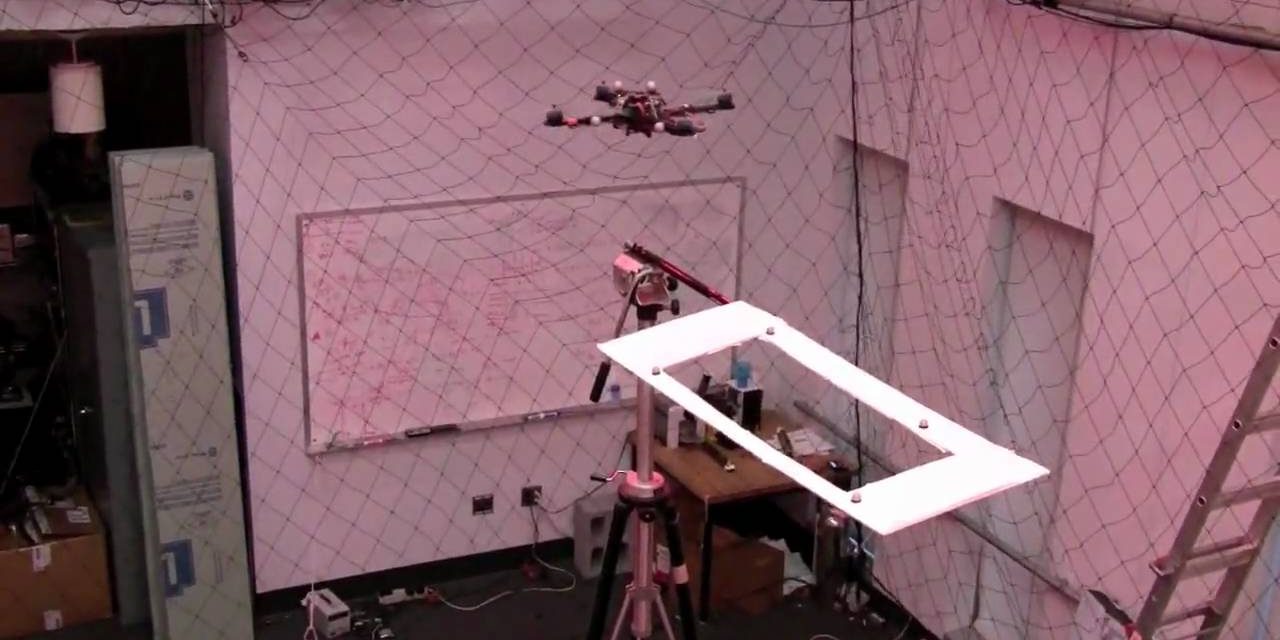Aggressive maneuvers for autonomous quadrotor flight
Related…
Click here to support Brasscheck
Quadrotor Formation Flying Gets Aggressive
UPENN via IEEE
Quadotors are capable enough on their own, but when they team up, they can accomplish significantly more. It’s relatively straightforward to control a couple of them at once using a precision motion capture system, but ultimately, it’s going to be much more useful to have the quadrotors work with each other directly, without heavy dependence on external sensors and computers.
The University of Pennsylvania’s GRASP Lab, famous for those crazy quadrotors that can fly through windows and hula hoops, has been working on getting groups of the robots to fly together in formation. Just like with a formation of fighter jets, there’s a leader robot in each squad along with several follower robots. The followers have just two jobs: follow the leader, and preserve the shape of the formation.
Being able to do this is all about communication, as Professor Nathan Michael discussed today at the IEEE International Conference on Robotics and Automation (ICRA) in Shanghai. As he and fellow researchers Matthew Turpin and Vijay Kumar have discovered, the robots have to not just know exactly where they are, but they also have to broadcast that information to their neighbors to maintain the integrity of the formation. This processing is all done on each individual quadrotor, so there’s no all-seeing computer watching everything and telling each robot where to go. The accuracy is impressive: 50 percent of the time the quadrotors are within a mere two centimeters of where they should be.
So what happens when some robots can’t talk to each other? If a robot fails for some reason, it’s able to bow out from the formation gracefully, and the other robots can move on without it, preserving the shape of the formation. You can see an example of this in the above vid. It’s an important capability: part of the advantage of having a group (or a swarm) is that it can be resilient to individual failures, but to harness this resiliency, you need to not have one failure cause a disruption to the rest of the group.
In the future, GRASP is looking at doing some outdoor experiments relying on a 10 to 20-centimeter-accurate on-robot GPS system, which is important because it gets away from reliance on indoor motion capture systems and introduces relevant variables like wind, rampant wireless interference, and violently jealous birds.
Visit IEEE








